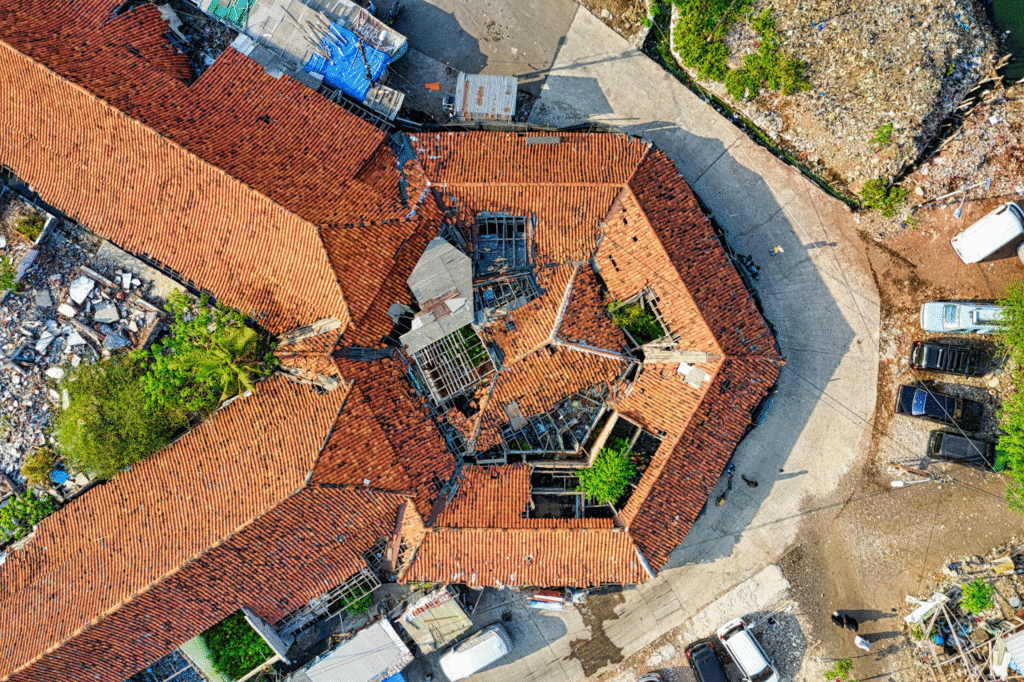When severe weather strikes, it doesn’t just disrupt your daily routine—it can threaten the safety and structure of your home. Storms bring wind, rain, hail, and falling debris, all of which can wreak havoc on a roof. Once the damage is done, acting quickly can help prevent more serious issues like mold growth, structural weakening, and water damage inside the house. Knowing what to do after a weather-related roofing emergency can make all the difference in reducing repair costs and restoring peace of mind.
Contacting a Professional Roofing Service
Before climbing onto your roof or inspecting the damage yourself, consider the hazards. Roofs compromised by storms can be unstable, making self-assessment risky. Calling in a trusted roofing service is often the safest and most efficient approach. Professionals are equipped to identify both visible and hidden damage, offer realistic estimates, and begin repairs quickly. If you’re facing severe issues such as leaks or partial collapse, you may need urgent roofing help to prevent the situation from worsening. Timely action by qualified experts can prevent temporary damage from becoming permanent and expensive.
Inspecting the Damage Safely
Once the immediate danger has passed and a professional has addressed critical concerns, homeowners can safely assess the situation from ground level. Using binoculars or a drone camera, you can check for missing shingles, exposed underlayment, or pieces of flashing on the lawn. Take note of water stains on interior ceilings, which often signal hidden leaks. Avoid climbing onto the roof yourself unless you’re trained and have the right safety equipment. Document everything with photos and written notes to assist with insurance claims and repair planning.
Filing a Homeowners Insurance Claim
Most insurance policies cover storm damage to roofs, but the process of filing a claim can be tedious and time-consuming. Start by reviewing your policy so you understand what’s covered and what’s not. Contact your insurer as soon as you’ve confirmed damage. They may request evidence, such as pictures and a contractor’s report, before sending an adjuster to evaluate the roof. Be thorough in your documentation and stay in regular contact with your insurance company to avoid delays. If needed, your roofing contractor can help clarify the extent of the damage and assist in communicating with the insurance adjuster.
Preventing Further Damage
While waiting for repairs, take temporary steps to minimize additional harm. Use waterproof tarps to cover exposed areas of the roof and move furniture or valuables away from leaks. Placing buckets or containers under active drips can help manage water intrusion. If interior ceilings show signs of bulging from trapped water, poke a small hole in the center to release the pressure and prevent a sudden collapse. These stopgap measures won’t fix the problem, but can limit the impact until proper repairs begin.
Choosing the Right Materials for Repairs
Once you’re ready to rebuild, think carefully about the materials being used. Depending on your location and the type of damage sustained, you might want to upgrade to shingles that resist high winds, hail, or ultraviolet degradation. Your contractor can recommend materials that match the rest of your roof while offering improved durability. While it might be tempting to go with the cheapest option, selecting higher-quality products can increase your roof’s lifespan and lower the risk of similar damage in the future.
Planning for Long-Term Roof Maintenance
Once your roof has been repaired, it’s easy to shift focus and forget about it until the next storm rolls in. But neglecting roof maintenance can lead to small problems developing into major expenses down the road. Taking a proactive approach is one of the most effective ways to extend the life of your roof and minimize the risk of future weather damage. Start by scheduling a professional inspection at least once a year, preferably in the spring or fall. These inspections help catch issues like loose shingles, worn flashing, or small leaks before they become serious. You should also keep an eye on your attic—signs of moisture, mold, or sagging insulation can indicate trouble above.
Gutters play a crucial role in directing water off your roof and away from your foundation. Clogged or damaged gutters can cause water to pool on your roof, leading to rot, leaks, or structural damage. Cleaning your gutters regularly, especially after heavy storms or during the fall when leaves build up, is a simple but effective maintenance task. Trim overhanging branches that could break off during high winds or scrape against the shingles, wearing them down over time.
Weather damage can be devastating, but with the right steps, recovery doesn’t have to be overwhelming. Contacting a professional for urgent repairs, documenting everything thoroughly, and working with your insurer can all help speed up the process. Preventive measures and thoughtful material choices during repairs not only protect your home now but also prepare it for future storms. A strong, well-maintained roof is one of the best defenses your home has against whatever the skies may bring.





